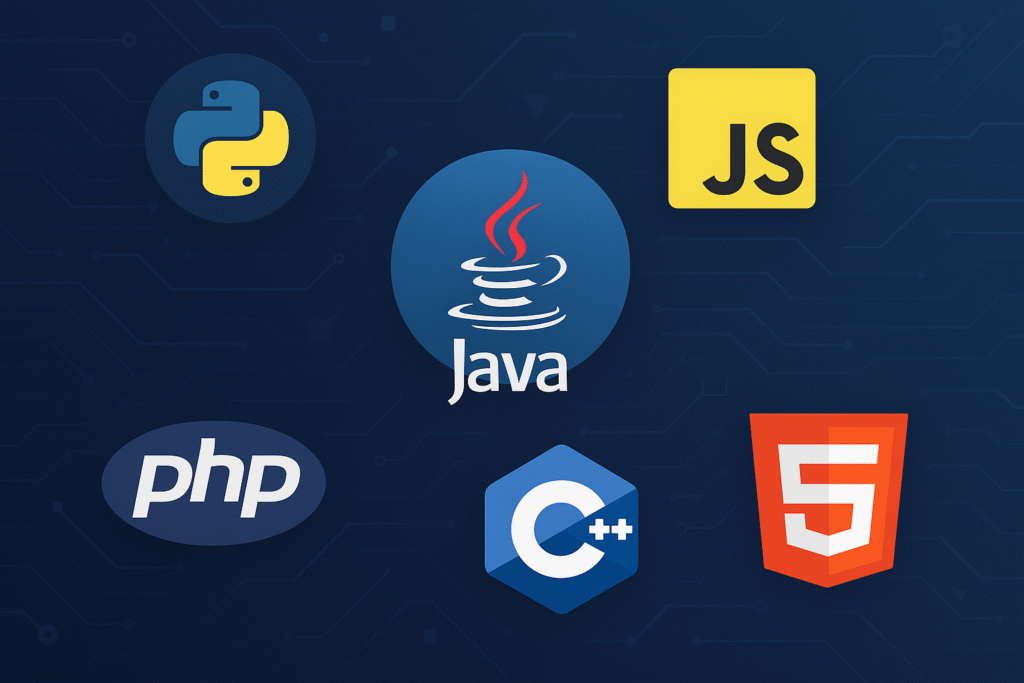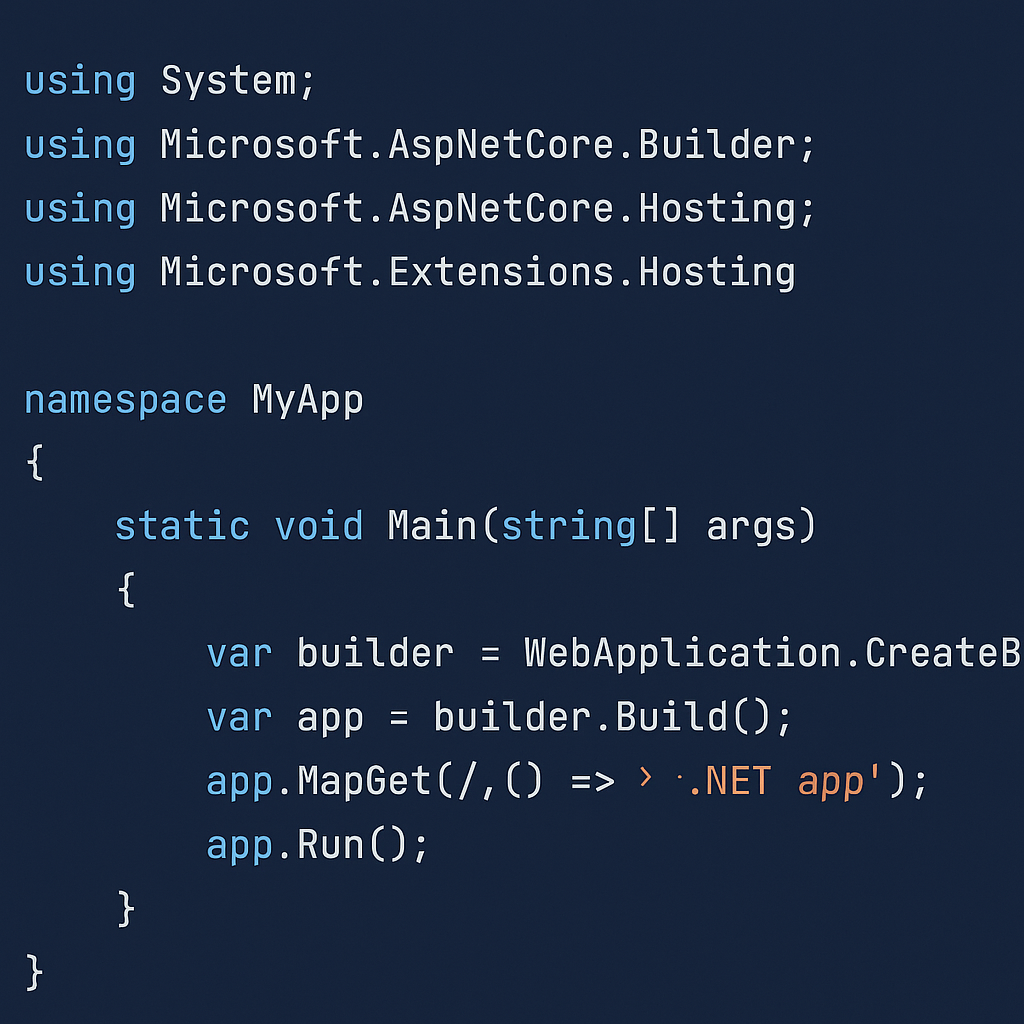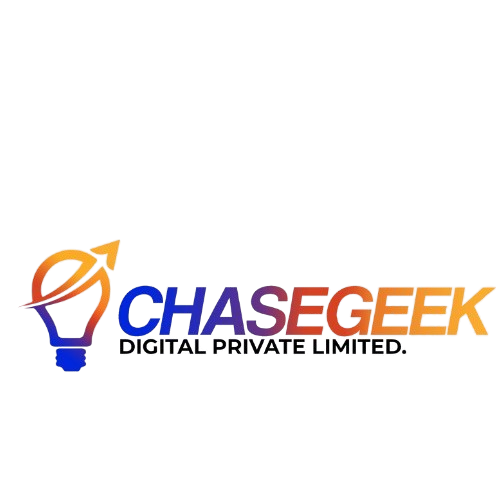Introduction
The programming landscape continues to evolve rapidly, and understanding the top programming languages in 2025 is crucial for developers, businesses, and tech enthusiasts alike. Whether you’re a seasoned developer looking to expand your skillset, a beginner choosing your first language, or a business leader making strategic technology decisions, this comprehensive guide will help you navigate the current programming ecosystem.

The demand for skilled programmers continues to surge across industries, from artificial intelligence and machine learning to web development and cloud computing. In this detailed analysis, we’ll explore the most in-demand programming languages, their applications, market trends, and why they matter in today’s technology-driven world.
Table of Contents
- Why Top Programming Languages Matter
- The 10 Most In-Demand Programming Languages
- Market Analysis and Trends
- How to Choose the Right Programming Language
- Future Outlook
- Frequently Asked Questions
- Conclusion and Next Steps
Why Top Programming Languages Matter
Understanding the top programming languages is essential for several reasons:
Career Advancement: Mastering popular languages significantly increases job opportunities and salary potential. According to recent industry surveys, developers skilled in high-demand languages earn 20-40% more than those working with legacy technologies.
Business Strategy: Companies choosing the right programming languages can accelerate development, reduce costs, and attract top talent. The wrong choice can lead to technical debt and hiring challenges.
Future-Proofing: Learning trending languages ensures your skills remain relevant as technology evolves. The programming languages dominating 2025 are likely to continue their growth trajectory.
Project Success: Different languages excel in different domains. Choosing the right tool for the job can make the difference between project success and failure.
The 10 Most In-Demand Programming Languages
1. Python – The AI and Data Science Champion

Python has solidified its position as the most popular among top programming languages in 2025. Its dominance stems from several factors:
Why Python Leads:
- AI and Machine Learning: Python powers most AI frameworks including TensorFlow, PyTorch, and scikit-learn
- Data Science: Libraries like pandas, NumPy, and Matplotlib make data analysis effortless
- Web Development: Frameworks like Django and Flask enable rapid web application development
- Automation: Python excels at scripting and automation tasks
Market Demand: Approximately 46% of recruiters actively seek Python developers, making it the most sought-after skill in the programming job market.
Salary Range: Python developers earn between $85,000-$150,000 annually, with senior positions commanding even higher compensation.
Best For: Beginners, data scientists, AI/ML engineers, web developers, and automation specialists.
2. JavaScript & TypeScript – The Web Development Powerhouse
JavaScript remains indispensable in the top programming languages ecosystem, while TypeScript continues its meteoric rise.
JavaScript Strengths:
- Universal Web Language: Every interactive website uses JavaScript
- Full-Stack Development: Node.js enables server-side JavaScript development
- Mobile Development: React Native and other frameworks bring JS to mobile
- Rich Ecosystem: Massive community and countless libraries
TypeScript’s Growing Importance:
- Static Typing: Reduces bugs and improves code maintainability
- Enterprise Adoption: Large organizations prefer TypeScript for scalable applications
- Developer Experience: Better tooling and IDE support
Market Position: Combined, JavaScript and TypeScript represent the largest segment of programming jobs globally.
3. Java – The Enterprise Stalwart
[Image Suggestion: Java code showing enterprise application architecture] Alt text: “Java programming language enterprise application code example with Spring framework”
Despite being decades old, Java remains among the top programming languages due to its reliability and extensive use in enterprise environments.
Java’s Enduring Appeal:
- Enterprise Applications: Banks, insurance companies, and large corporations rely heavily on Java
- Android Development: Primary language for Android app development
- Performance: Excellent performance for large-scale applications
- Stability: Mature ecosystem with proven reliability
Job Market: About 39% of recruiters seek Java developers, indicating strong and stable demand.
Evolution: Modern Java versions (Java 17+) include new features making it more developer-friendly while maintaining backward compatibility.
4. C/C++ – Performance and System Programming
C and C++ maintain their position in the top programming languages for performance-critical applications.
Use Cases:
- System Programming: Operating systems, device drivers, embedded systems
- Game Development: High-performance game engines
- High-Frequency Trading: Where microseconds matter
- IoT and Embedded: Hardware-level programming
Why They Matter: When performance is paramount, C/C++ remain unmatched. They offer direct hardware control and minimal overhead.
5. C# – Microsoft’s Versatile Language

C# continues to be one of the top programming languages for enterprise and game development.
Strengths:
- .NET Ecosystem: Comprehensive framework for various application types
- Unity Game Development: Primary language for Unity game engine
- Cross-Platform: .NET Core enables development across different operating systems
- Enterprise Friendly: Strong type system and excellent tooling
Market Position: Consistently ranks in the top 5-6 most used languages globally.
6. Go (Golang) – Cloud-Native Development
Go has established itself among the top programming languages for modern cloud infrastructure.
Key Advantages:
- Concurrency: Excellent support for concurrent programming
- Performance: Compiled language with great performance characteristics
- Simplicity: Clean syntax that’s easy to learn and maintain
- Cloud Infrastructure: Powers Docker, Kubernetes, and many DevOps tools
Growing Demand: Particularly sought after for microservices, cloud applications, and DevOps roles.
7. Rust – Safe Systems Programming
Rust has quickly become one of the top programming languages for systems programming, prioritizing safety and performance.
Unique Features:
- Memory Safety: Prevents common programming errors at compile time
- Performance: Zero-cost abstractions with C/C++ level performance
- Concurrency: Safe concurrent programming without data races
- Growing Adoption: Used by major companies for critical infrastructure
Developer Satisfaction: Consistently rated as the “most loved” programming language in developer surveys.
8. Kotlin – Modern Android and JVM Development
Kotlin has secured its place among top programming languages, especially for Android development.
Advantages:
- Android Development: Google’s preferred language for Android
- Java Interoperability: Seamless integration with existing Java codebases
- Concise Syntax: Reduces boilerplate code significantly
- Multiplatform: Kotlin Multiplatform enables code sharing across platforms
Market Growth: Strong growth in mobile development and enterprise JVM applications.
9. Swift – iOS and Apple Ecosystem
Swift remains essential among top programming languages for Apple platform development.
Key Features:
- iOS Development: Primary language for iPhone and iPad apps
- Performance: Fast execution with modern language features
- Safety: Type safety and memory management
- SwiftUI: Modern declarative UI framework
Market Demand: Critical for any business targeting iOS users, representing a significant market segment.
10. PHP – Web Development Backbone
PHP continues to be relevant among top programming languages for web development.
Continued Relevance:
- Web Presence: Powers approximately 77% of websites with server-side languages
- WordPress: Dominates content management systems
- Frameworks: Laravel, Symfony provide modern PHP development
- Legacy Systems: Massive existing codebase requiring maintenance
Market Analysis and Trends
The top programming languages landscape in 2025 reflects several key industry trends:
AI and Data Science Dominance
Python’s rise to the top directly correlates with the explosive growth in artificial intelligence and data science. Organizations across industries are investing heavily in AI capabilities, driving unprecedented demand for Python developers.
Statistics:
- AI/ML job postings increased by 344% over the past five years
- Python-related positions grew by 456% in the same period
- Data science roles command average salaries 30% higher than general programming positions
Web Development Evolution
JavaScript and TypeScript continue dominating web development, but the landscape is evolving:
- Frontend Frameworks: React, Vue.js, and Angular drive modern web applications
- Full-Stack Development: Node.js enables JavaScript across the entire stack
- TypeScript Adoption: Over 60% of new JavaScript projects now use TypeScript
Cloud-Native Computing
The shift to cloud-native architectures has elevated languages like Go and Rust:
- Microservices: Go’s simplicity and performance make it ideal for microservices
- Container Orchestration: Kubernetes and Docker are built with Go
- Edge Computing: Rust’s performance and safety features suit edge computing needs
Enterprise Stability
Traditional enterprise languages maintain their importance:
- Java: Over 3 billion devices run Java, ensuring continued demand
- C#: Microsoft’s ecosystem supports millions of enterprise applications
- C/C++: Critical infrastructure and embedded systems rely on these languages
How to Choose the Right Programming Language
Selecting from the top programming languages depends on several factors:
For Beginners
Recommended Starting Languages:
- Python: Excellent for beginners due to readable syntax and versatility
- JavaScript: Essential for web development and has immediate visual results
- Java: Strong foundation in programming concepts and extensive learning resources
For Career Changers
High-Demand Options:
- Python: Data science and AI roles offer excellent career prospects
- JavaScript/TypeScript: Web development provides numerous opportunities
- Java: Enterprise development offers stability and good salaries
For Businesses
Selection Criteria:
- Project Requirements: Match language capabilities to project needs
- Team Expertise: Consider existing team skills and learning curve
- Long-term Maintenance: Choose languages with strong community support
- Talent Availability: Ensure you can hire developers in your chosen language
By Industry
Finance: Java, C++, Python Healthcare: Python, Java, C# Gaming: C++, C#, JavaScript Mobile: Swift (iOS), Kotlin (Android) Web Development: JavaScript, TypeScript, Python, PHP Data Science: Python, R, Scala DevOps: Go, Python, Bash
Future Outlook
The top programming languages landscape will continue evolving, driven by emerging technologies:
Emerging Trends
Artificial Intelligence Integration: Languages with strong AI capabilities will grow in importance. Python’s dominance will likely continue, but we may see new languages designed specifically for AI development.
Quantum Computing: As quantum computing matures, languages like Q# and Qiskit (Python-based) may gain prominence.
WebAssembly Growth: Languages that compile to WebAssembly, including Rust and Go, may see increased web adoption.
Sustainability Focus: Energy-efficient languages may gain importance as environmental concerns grow.
Predictions for 2026-2030
Python: Will likely maintain its position as the top language, driven by continued AI/ML growth.
Rust: Expected to grow significantly in systems programming and web development.
Go: Will continue expanding in cloud-native and microservices development.
TypeScript: May eventually overtake JavaScript in new project adoption.
Kotlin: Could expand beyond Android into more server-side applications.
Salary Insights and Career Opportunities
Understanding compensation for top programming languages helps guide career decisions:
Average Salary Ranges (US Market)
Python: $95,000 – $165,000
JavaScript/TypeScript: $85,000 – $155,000
Java: $90,000 – $160,000
C++: $100,000 – $175,000
C#: $85,000 – $150,000
Go: $110,000 – $180,000
Rust: $120,000 – $190,000
Swift: $100,000 – $170,000
Kotlin: $95,000 – $165,000
Factors Affecting Compensation
Experience Level: Senior developers earn 50-100% more than junior developers Location: Silicon Valley and major tech hubs offer 20-40% higher salaries Industry: Finance and healthcare typically pay premiums Specialization: AI/ML, security, and distributed systems command higher rates
Learning Resources and Getting Started
For those looking to master the top programming languages, here are recommended learning paths:
Online Platforms
Free Resources:
- Python: Python.org tutorial, Codecademy, freeCodeCamp
- JavaScript: MDN Web Docs, JavaScript.info, freeCodeCamp
- Java: Oracle’s Java tutorials, Codecademy
- C++: cppreference.com, learncpp.com
Paid Platforms:
- Pluralsight, Udemy, Coursera, edX
Practical Projects
Python Projects:
- Data analysis with pandas
- Web scraping automation
- Machine learning model
- Django web application
JavaScript Projects:
- Interactive web page
- React.js application
- Node.js API
- Mobile app with React Native
Java Projects:
- Spring Boot web service
- Android application
- Desktop GUI application
- Microservice architecture
Industry Case Studies
Real-world examples of top programming languages in action:
Netflix – Python for Data Science
Netflix uses Python extensively for:
- Recommendation algorithms
- Content analysis
- A/B testing frameworks
- Data pipeline management
Result: Python enables Netflix to process petabytes of data and deliver personalized experiences to 200+ million subscribers.
Uber – Go for Microservices
Uber adopted Go for:
- High-performance microservices
- Real-time location services
- Payment processing systems
- Driver matching algorithms
Result: Go’s performance and simplicity enabled Uber to scale to millions of rides daily.
Discord – Rust for Performance
Discord uses Rust for:
- Message routing systems
- Game SDK development
- Performance-critical components
- Memory-safe concurrent processing
Result: Rust helped Discord handle billions of messages with improved reliability and performance.
Best Practices for Multi-Language Development
Modern applications often use multiple top programming languages:
Polyglot Architecture Benefits
Specialization: Use each language for its strengths Performance: Optimize critical components with appropriate languages Team Skills: Leverage existing team expertise Third-party Integration: Easier integration with diverse systems
Common Combinations
Web Applications: JavaScript/TypeScript frontend, Python/Java backend Mobile Apps: Swift/Kotlin native, JavaScript for cross-platform Data Platforms: Python for analysis, Java for processing, Go for APIs Game Development: C++ for engine, C# for gameplay, JavaScript for UI
Frequently Asked Questions
What are the top programming languages in 2025?
The top programming languages in 2025 are Python, JavaScript/TypeScript, Java, C/C++, C#, Go, Rust, Kotlin, Swift, and PHP. Python leads due to its dominance in AI and data science, while JavaScript remains essential for web development.
Which programming language should I learn first?
For beginners, Python is often the best choice among top programming languages due to its readable syntax and versatility. However, JavaScript is excellent if you’re interested in web development, and Java provides a strong foundation in programming concepts.
Are the top programming languages hard to learn?
The difficulty varies among top programming languages. Python and JavaScript are considered beginner-friendly, while C++ and Rust have steeper learning curves. Most languages can be learned with dedication and proper resources, typically taking 6-12 months to achieve proficiency.
Which programming language pays the most?
Among top programming languages, Rust and Go typically offer the highest salaries due to high demand and limited supply of skilled developers. However, specialized skills in any language (like Python for AI or JavaScript for React) can command premium salaries.
Do I need to learn multiple programming languages?
While not absolutely necessary, learning multiple top programming languages increases your versatility and job prospects. Most professional developers know 2-4 languages, with specialization in one or two areas.
How often do top programming languages change?
The list of top programming languages evolves gradually. Core languages like Python, JavaScript, and Java have maintained their positions for years, while newer languages like Rust and Go have steadily climbed the rankings. Major shifts typically occur over 3-5 year periods.
What programming language is best for artificial intelligence?
Python dominates AI development among top programming languages due to its extensive libraries (TensorFlow, PyTorch, scikit-learn) and ease of use. R is also used for statistical analysis, while languages like Julia are gaining traction for high-performance computing.
Which programming language is best for web development?
JavaScript is essential for web development among top programming languages, handling both frontend and backend (Node.js) development. TypeScript adds type safety to large applications. Python (Django/Flask), Java (Spring), and PHP are also popular for backend development.
Are there any programming languages I should avoid?
Rather than avoiding languages, focus on learning top programming languages that align with your career goals. However, be cautious about learning languages with declining demand or limited job markets unless you have specific requirements.
How do I stay updated with programming language trends?
Follow industry reports, developer surveys (Stack Overflow, GitHub), tech blogs, and job market trends. Join programming communities, attend conferences, and regularly review the top programming languages rankings to stay informed about industry changes.
What’s the difference between compiled and interpreted languages?
Among top programming languages, compiled languages (C++, Go, Rust) are translated to machine code before execution, offering better performance. Interpreted languages (Python, JavaScript) are executed line-by-line, providing more flexibility and faster development cycles.
Should I specialize in one programming language or learn multiple?
A balanced approach works best with top programming languages. Develop deep expertise in one primary language while maintaining working knowledge of 2-3 others. This provides specialization for complex projects while maintaining versatility for diverse opportunities.
Conclusion and Next Steps
The top programming languages in 2025 reflect the diverse needs of modern software development, from AI and data science to web development and systems programming. Python’s dominance in AI, JavaScript’s web ubiquity, and the steady reliability of Java demonstrate that different languages serve different purposes in the technology ecosystem.
Key Takeaways
For Developers: Focus on mastering one or two top programming languages that align with your career goals, then gradually expand your skillset. The combination of a versatile language like Python or JavaScript with a specialized language like Go or Rust can open numerous opportunities.
For Businesses: Choose top programming languages based on your specific needs, team expertise, and long-term strategy. Don’t chase trends without considering practical factors like talent availability and maintenance requirements.
For Students: Start with beginner-friendly options from the top programming languages list, such as Python or JavaScript, then branch out based on your interests and career aspirations.
Ready to Master the Top Programming Languages?
The programming landscape offers unprecedented opportunities for those willing to invest in learning top programming languages. Whether you’re starting your coding journey or expanding your existing skills, the languages covered in this guide provide a solid foundation for success in 2025 and beyond.
Take Action Today:
- Choose Your First Language: Select one of the top programming languages based on your goals and interests
- Start Learning: Enroll in an online course or tutorial for your chosen language
- Build Projects: Apply your knowledge through hands-on projects and portfolio development
- Join Communities: Connect with other developers learning the same top programming languages
- Stay Updated: Follow industry trends to keep your skills relevant and in-demand
The future belongs to those who embrace continuous learning and adapt to technological change. By mastering the top programming languages of 2025, you’re positioning yourself for success in an increasingly digital world.
Start your programming journey today, and join the millions of developers shaping the future through code. The top programming languages are your gateway to exciting career opportunities, innovative projects, and the chance to make a meaningful impact in the technology industry.
Ready to dive deeper into programming? Subscribe to our newsletter for the latest updates on programming trends, career advice, and in-depth tutorials on the top programming languages. Your coding journey starts now!

